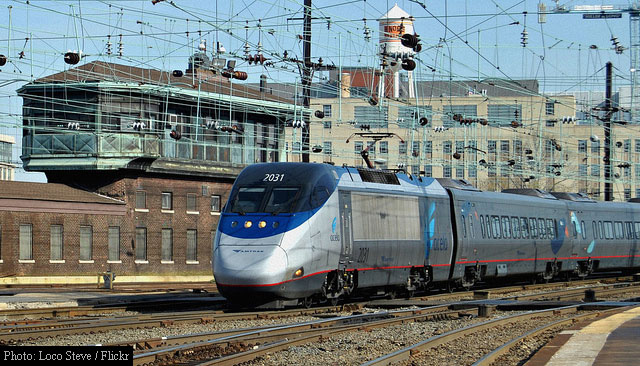
To paraphrase Rahm Emanuel, and to accurately sum up the philosophy of many in Washington these days: A tragedy is a terrible thing to waste.
Even before all the missing passengers were accounted for in this week’s disastrous crash in Philadelphia, Amtrak’s advocates were using the disaster as a lever to extract more federal funds for the nation’s rolling money pit.
Early indications suggest that safety upgrades could indeed have averted the catastrophe. The New York Times reported that the train, which was traveling from Washington to New York on Tuesday night when it derailed, entered a curve limited to 50 mph at more than double that speed. Positive train control technology, which is already available on some parts of Amtrak’s Northeast Corridor rail network, is designed to automatically slow or stop a train in dangerous situations. Safety investigators have suggested that the technology might have prevented the crash, had it been available on the stretch of track where it transpired.
Congress mandated that positive train control technology be installed throughout the nation’s rail network after a 2008 accident that killed 25 people in California. But none of the nation’s railroads are close to completion on these mandatory upgrades, which under current law are due to be finished seven months from now. Congress seems likely to grant an extension to 2020 at the urging of both freight and passenger rail operators.
The widespread delay in installing these safety measures is not, for the most part, due to lack of funds for capital improvements. Nor is it due to any unwillingness on the part of operators. The fact remains that a system that can remotely take control of a train under the proper circumstances, and only under those circumstances, is an extremely complex undertaking – especially because railroads routinely use one another’s tracks. Amtrak itself makes extensive use of freight tracks in most parts of the country. Each railroad has its own tools, but they need to install systems that can communicate with one another for the system to function.
The truth is that there was no reason to try to rush an increase in Amtrak’s funding through the House Appropriations Committee this week. No reason other than trying to capitalize on the emotions of the moment, that is. Call it congressional ambulance chasing.
Despite the timing, however, lawmakers ultimately voted down the proposal, which would have increased funding for U.S. rail infrastructure overall. The committee is working on the 2016 funding bill, which as it stands, cuts Amtrak funding rather than increasing it. Meanwhile, at a hearing for a House Transportation and Infrastructure subcommittee on Wednesday, other lawmakers argued over whether funding cuts were to blame for a lapse in railroad safety.
Amtrak was formed approximately 45 years ago from the financial wreckage of America’s rail passenger service, with a mandate to make itself self-sustaining. That has never come close to happening, partly due to poor management, but mostly because it is impossible. Trains tend to make money when they are moving bulky cargo slowly over very long distances. If you properly account for capital costs, they invariably lose money when the goal is to move small cargo – like passengers and their briefcases – quickly over short distances.
Passenger rail travel will never be economically self-sustaining in this country. Not as metropolitan commuter lines. Not as long-haul conveyances across our wide-open spaces. Not even in the Northeast Corridor, where Amtrak is basically an extended commuter line, nominally profitable (if someone else pays for the hardware) but not nearly enough to support the rest of a creaky system.
Amtrak is not just competing with airplanes in the Northeast Corridor, though its advocates like to look only at air travel as its alternative. It is also competing against cars and buses, which offer much more efficient and flexible transportation alternatives.
Democrats on the committee made extensive use of the word “ideology” to criticize Republicans for denying Amtrak an extra slice of its daily bread. That was a prearranged talking point, and it is exactly backwards. Republicans were not only obeying pre-existing budget caps, but were taking the sensible approach of trying to decide how best to spend money to provide the safest transportation for the greatest number of people. It was the Democrats who were blinded by an ideology, one that says that passengers should be moved by rail at any cost, even when it has not been an economically practical or widely popular mode of transit at any point in the last half-century.
If people wanted rail travel, they would pay for it. Then nobody would need to exploit a tragedy to squeeze a few more shekels out of Congress.
- Bulenox: Get 45% to 91% OFF ... Use Discount Code: UNO
- Risk Our Money Not Yours | Get 50% to 90% OFF ... Use Discount Code: MMBVBKSM
Disclaimer: This page contains affiliate links. If you choose to make a purchase after clicking a link, we may receive a commission at no additional cost to you. Thank you for your support!


Leave a Reply